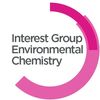Advanced oxidation technologies: Sustainable solutions for environmental treatments
This collaborative book provides an overview of Advanced Oxidation Technologies (AOTs) and a few Advanced Reduction Technologies (ARTs) “as sustainable, low cost and low energy treatments for water, air and soil”.
Following editor profiles (Marta I. Litter, Roberto J. Candal, and J. Martín Meichtry), the book commences with the simplest technique reviewed – decontamination by solar irradiation. This comfortable, non-specialist introduction set the tone of the chapters to come. A uniform layout includes an introduction describing the principles, benefits, and drawbacks of the reviewed AOT, and environmental factors contributing to efficacy and efficiency of the technology. Where significant, target compounds were presented with their environmental relevance. Experimental sections discussed sample collection and preparation, AOT methods, and analysis techniques, and relevant photos were shown of apparatus and samples, condensing large volumes of useful experimental information. Results and Discussion (sometimes separate sections), follow and on occasion take into account the potential negative impacts of the AOT, including reaction intermediates, by-products, and potentially harmful effects of interactions, ensuring that readers looking to evaluate the suitability of an AOT for a desired application are able to consider these factors. Conclusions on the suitability of the AOT for the treatment applications investigated were presented last.
Following editor profiles (Marta I. Litter, Roberto J. Candal, and J. Martín Meichtry), the book commences with the simplest technique reviewed – decontamination by solar irradiation. This comfortable, non-specialist introduction set the tone of the chapters to come. A uniform layout includes an introduction describing the principles, benefits, and drawbacks of the reviewed AOT, and environmental factors contributing to efficacy and efficiency of the technology. Where significant, target compounds were presented with their environmental relevance. Experimental sections discussed sample collection and preparation, AOT methods, and analysis techniques, and relevant photos were shown of apparatus and samples, condensing large volumes of useful experimental information. Results and Discussion (sometimes separate sections), follow and on occasion take into account the potential negative impacts of the AOT, including reaction intermediates, by-products, and potentially harmful effects of interactions, ensuring that readers looking to evaluate the suitability of an AOT for a desired application are able to consider these factors. Conclusions on the suitability of the AOT for the treatment applications investigated were presented last.
|
Efficiency, sustainability, and cost-effectiveness were evaluated, keeping in mind the real-world applications of these methods. All but two of the 19 treatments addressed water pollution, covering the general decontamination of water, water splitting for hydrogen gas and the removal of compounds including arsenic, azo dyes, phenol, herbicides (e.g. glyphosate), perchlorate, insecticides (chloropyrifos), nitrates (from fertilisers/industrial effluent), organophosphates (pesticides), bacteria (E. coli), and pharmaceuticals (β-blockers). The majority of test data come from water samples but some techniques are applicable to soil runoff. Air pollution treatments addressed the presence of bacterial endospores from indoor air pollution, and NOx/volatile toluene gases from fossil fuels.
|
At relevant points throughout, the chemical reactions, interactions and degradation mechanisms are presented for each AOT, highlighting the effective pathways of the treatments. Some chapters address operational variables of the technique (light, temperature, etc.), whilst others assess different active components or methods for their synthesis. Where intermediates and by-products are identified as potentially hazardous or harmful to human health or the environment, this is assessed, including ecotoxicity assays. Data is supported by abundant charts and figures, but some information is lost in monochrome print (figures referred to “red lines”). The final chapter provides an excellent review of similar techniques and selection of the most applicable.
Some of the acronyms and abbreviations used present a possible source of confusion due to their similarities with chemical formulae (e.g. CoI is not an erroneous reference to CoI2, but reference compound I). There are several proofing and translation errors.
Overall, this book is an excellent resource for anyone looking to gain insight into the applications and implementation of AOTs. However, it is not accessible to the layperson (non-chemist). I would recommend this book to any interested graduate chemist and certainly to chemists looking to identify different methods for cost-effective and energy efficient treatment of polluted waters.
Reference
Litter, M. I., Candal, R. J. and Meichtry, J. M., 2017. Advanced Oxidation Technologies: Sustainable Solutions for Environmental Treatments. CRC Press, Leiden, NL. ISBN: 9781138072886
Some of the acronyms and abbreviations used present a possible source of confusion due to their similarities with chemical formulae (e.g. CoI is not an erroneous reference to CoI2, but reference compound I). There are several proofing and translation errors.
Overall, this book is an excellent resource for anyone looking to gain insight into the applications and implementation of AOTs. However, it is not accessible to the layperson (non-chemist). I would recommend this book to any interested graduate chemist and certainly to chemists looking to identify different methods for cost-effective and energy efficient treatment of polluted waters.
Reference
Litter, M. I., Candal, R. J. and Meichtry, J. M., 2017. Advanced Oxidation Technologies: Sustainable Solutions for Environmental Treatments. CRC Press, Leiden, NL. ISBN: 9781138072886


